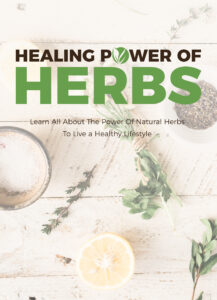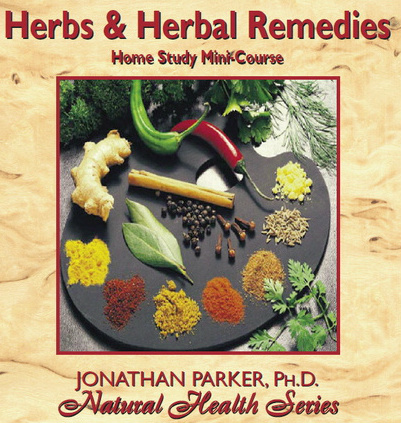When to Harvest Herbs for Optimal Flavor

Before diving in, please note: This post is for informational purposes only. If you’d like to know more about how we approach topics, feel free to check out our friendly Disclaimer Page.
Hey there, amazing readers! 🖐️ Just a quick note: yes, we know there are a lot of ads here. Trust us, we get it—it’s not the prettiest look, but they help us keep this blog alive and kicking. Those pesky little ads cover the costs of all the behind-the-scenes magic, from hosting and tech stuff to creating content we hope you’ll love.
We’re committed to delivering quality posts, and your support (even just sticking around despite the ads) means everything to us. So, bear with us, and thanks for helping us keep the good vibes rolling. Now, on to the fun stuff! 😉
TRANSLATE BUTTON AT THE END OF THE ARTICLE
A Quick Overview
Harvesting herbs at the right time can turn a simple dish into a culinary masterpiece.
The flavor of herbs can vary dramatically depending on when you pick them.
Timing is everything!
In this guide, we’ll dive into how to determine the perfect moment to harvest your herbs for that optimal burst of flavor.
Whether you’re a budding gardener or someone with a few pots on the windowsill, I’ll share everything you need to know to get the best out of your herbs.
Understanding Herb Growth Stages for Better Flavor
Herbs go through distinct growth stages.
Understanding these stages helps us know when to harvest for maximum flavor.
Seedling Stage: This is when herbs are just sprouting.
The flavors are minimal, and the leaves are delicate.
At this stage, it’s best to let them grow.
Vegetative Growth: As herbs develop, they enter the vegetative phase.
This is when leaves begin to expand.
The flavors start to become more pronounced as the plant matures.
Maturity: This is the sweet spot for many herbs, where they develop their full flavor profile.
Picking during this stage can yield the most flavorful leaves.
Post-Maturity: After reaching full growth, some herbs start to bolt or flower.
While some blooms can be edible, most herbs lose flavor as they enter this stage.
Monitoring your herbs closely will help you know where they are in their growth cycle.
This understanding leads to better harvesting decisions.
Why Timing Matters: The Science of Herb Harvesting
Timing is critical when it comes to harvesting herbs.
The science behind this lies in the plant’s essential oils—these compounds give herbs their characteristic aromas and flavors.
Peak Oil Content: Herbs generally have the highest concentration of essential oils just before flowering.
During this time, they are packed with flavor.
Photosynthesis and Growth: The time of day affects photosynthesis.
Herbs continue to produce oils throughout the day, but the concentration changes.
Early morning often yields the most flavorful leaves.
Discover the "Healing Power of Herbs" 🌿

Plant Stress: Factors like pests or drought can impact flavor.
Healthy plants produce more oils, so keep your plants well-watered and pest-free.
Chemical Composition: The chemical compounds that contribute to flavor can change based on when you harvest.
For example, basil has sweet notes in the morning but can become more peppery as the day goes on.
Understanding these scientific principles helps ensure that we harvest at the right moment for flavor intensity.
The Best Time of Day to Harvest Your Herbs
Have you ever noticed that coffee tastes different at various times of the day?
The same goes for herbs!
The time of day plays a crucial role in the flavor profile.
Early Morning: The best time to harvest herbs is typically in the morning after the dew has dried.
This is when the essential oils are at their peak concentration.
Midday Madness: If you’re harvesting during the hottest part of the day, expect the flavor to be less intense.
Plants lose moisture, and oil concentration diminishes.
Evening Harvest: Evening harvesting can be beneficial for certain herbs.
The cooler temperatures can preserve their oils, but you may miss the peak flavor you get in the morning.
Before Rain: It’s best to avoid harvesting right before a rainstorm.
The moisture can dilute the oils and affect the taste.
In my experience, early morning harvests always yield the most vibrant flavors.
If you can, wake up a little earlier for that fresh herb vibe!
Seasonal Considerations for Herb Flavor Profiles
Seasons bring different flavors to the table.
Each season adds unique characteristics to your herbs, so it’s wise to consider this when planning your harvest.
Spring Herbs: Fresh herbs like parsley and chives have a bright, crisp flavor.
They thrive as temperatures start to warm up.
Summer Bounty: Basil, cilantro, and dill explode with flavor in the summer.
The sunny days help create rich oils.
This is the time to really stock up.
Fall Harvest: As temperatures cool, some herbs will become more flavorful.
Mint and sage develop a heartier taste that complements autumn dishes.
Winter Survival: Some hardy herbs, like thyme and rosemary, can tolerate cold.
These herbs often have a stronger, more concentrated flavor during the winter months.
Recognizing these seasonal shifts can help you maximize the potential of your herb garden.
How Weather Conditions Affect Herb Flavor
Weather plays a significant role in how your herbs develop.
Here are some weather conditions to consider:
Sunshine: Sunny days promote oil production, enhancing flavor.
However, too much sun can stress the plant, leading to a decline in flavor.
Rain: A good soak can help, but heavy rain can wash away flavor compounds.
A few dry days after rain can lead to intense flavor development.
Humidity: High humidity can lead to softer leaves, which may dilute flavor.
Discover the "Healing Power of Herbs" 🌿
Conversely, low humidity can concentrate oils, making herbs taste bolder.
Temperature Fluctuations: Sudden temperature changes can shock plants.
Consistent weather helps maintain flavor consistency.
From my experience, I’ve noticed that herbs grown in sunny, slightly dry conditions tend to have the best flavor.
It’s all about finding that sweet balance!
Identifying the Perfect Leaf Size for Harvest
Knowing when to pick isn’t just about time; it’s also about size.
The right leaf size can make all the difference.
Young Leaves: Young, tender leaves are often more flavorful.
They usually have a mild taste that can brighten up dishes.
Mature Leaves: As leaves grow larger, they tend to develop stronger flavors.
This is especially true for herbs like basil and mint.
Over-sized Leaves: If leaves become too large, they can turn tough and leathery.
This means it’s time to harvest before they lose their pep.
Regular Harvesting: Regularly snipping off leaves will encourage more growth.
The plant will keep producing fresh, young leaves, making for a constant supply of flavor.
In my herb garden, I like to keep an eye out for those just-right leaves.
It’s like a treasure hunt for flavor!
Tips for Harvesting Herbs without Damaging Plants
Harvesting herbs can be a delicate dance.
You want to snip those flavorful leaves without damaging the plants.
Here are some tips to keep your herbs healthy:
Use Sharp Scissors: Dull blades can crush leaves and lead to bruising.
Sharp scissors make clean cuts.
Cut Above the Node: When harvesting, always cut just above a leaf node.
This will encourage new growth and keep the plant thriving.
Avoid Overharvesting: Don’t take more than one-third of the plant at a time.
This allows the herb to continue growing.
Harvest with Purpose: Only take what you need.
This not only keeps the plants healthy but also ensures you get the freshest herbs.
I remember a time I got a little too enthusiastic with my scissors and ended up with sad-looking plants.
Now, I’m all about that gentle touch!
The Role of Flowering in Herb Flavor Development
Flowering can change the flavor of your herbs.
While some blooms are edible, most herbs lose some of their flavor when they start to flower.
Pre-Flowering: Harvesting just before a plant starts to flower allows you to enjoy the most intense flavors.
Floral Notes: Some herbs, like chamomile and borage, develop nice floral flavors that can complement dishes.
If you enjoy these, feel free to let them bloom.
Post-Flowering: Once herbs begin to flower, the leaves can become bitter.
If you notice buds forming, it’s usually a signal to harvest fast!
Remember, not every herb benefits from flowering.
I’ve learned the hard way that sometimes, it’s better to snip away those buds to save the flavor!
When to Prune Herbs for Enhanced Flavor
Pruning is essential for maintaining the health and flavor of your herbs.
Regular pruning encourages fuller growth and enhances flavor.
Spring Pruning: After the frost has passed, give herbs like rosemary and thyme a light trim to promote new growth.
Mid-Season Pruning: For herbs like basil, regular pinching of the tops will encourage bushier plants and prevent them from bolting.
Final Fall Trim: Before the cold sets in, a light trim can help prepare your herbs for winter.
This also encourages them to come back stronger in the spring.
Pruning for Flavor: If you notice an herb starting to lose its flavor, it might be time for a good pruning session to stimulate new growth.
I always find that a little pruning can go a long way.
It’s like giving the herbs a fresh start!
Common Herbs and Their Ideal Harvesting Times
Different herbs have unique harvesting times that maximize their flavors.
Here’s a quick guide:
Basil: Best harvested in the morning when leaves are young and tender, just before flowering.
Cilantro: Harvest before it flowers for the best flavor.
The leaves are most flavorful in cool weather.
Rosemary: Can be harvested throughout the growing season, but young leaves in spring pack the most flavor.
Mint: Harvest regularly to keep the plant bushy and flavorful.
Young leaves are sweeter.
I keep a little notebook in my garden to jot down the best times for each herb.
It’s like having my own herb encyclopedia!
Signs Your Herbs Are Ready for Harvesting Bliss
Knowing when to harvest can be tricky.
Here are some signs that your herbs are ready for picking:
Leaf Color: Vibrant green leaves typically indicate healthy herbs.
Dull or yellowing leaves can mean it’s time to harvest.
Height: If your herbs are reaching for the sky, they may be ready to harvest.
Taller plants often hold more flavor.
Fragrance: A strong, delightful aroma indicates that herbs are rich in essential oils and ready to be used.
Bud Formation: If you see flower buds forming, it’s time to harvest!
The flavor will soon diminish.
I often take a moment to enjoy the scent of my herbs before I harvest.
That’s the best part!
Storing Freshly Harvested Herbs for Maximum Flavor
After you’ve harvested your herbs, proper storage is crucial to maintain their flavor.
Washing: Always rinse herbs gently to remove any dirt or bugs.
Pat them dry with a towel.
Refrigeration: Most herbs can be stored in the fridge, wrapped in a damp paper towel, inside a plastic bag.
This helps retain moisture.
Freezing: For longer-term storage, chop herbs and freeze them in ice cube trays filled with water or oil.
This preserves their flavor.
Drying: Some herbs can be dried by hanging them upside down in a cool, dark place.
This method enhances their concentrated flavor.
I’ve tried all sorts of storage methods, but freezing is my go-to.
It’s like having fresh herbs on hand all year round!
Conclusion
Harvesting herbs at the right time is an art and a science.
By understanding growth stages, seasonal changes, and ideal conditions, I can make the most of my culinary creations.
The key is to be observant and patient.
With these tips in hand, you’ll be able to cultivate a flavorful herb garden, ensuring that every dish bursts with the vibrant tastes of your homegrown herbs.
Happy harvesting!

The Enlightenment Journey is a remarkable collection of writings authored by a distinguished group of experts in the fields of spirituality, new age, and esoteric knowledge.
This anthology features a diverse assembly of well-experienced authors who bring their profound insights and credible perspectives to the forefront.
Each contributor possesses a wealth of knowledge and wisdom, making them authorities in their respective domains.
Together, they offer readers a transformative journey into the realms of spiritual growth, self-discovery, and esoteric enlightenment.
The Enlightenment Journey is a testament to the collective expertise of these luminaries, providing readers with a rich tapestry of ideas and information to illuminate their spiritual path.
Our Diverse Expertise 🌟
While our primary focus is on spirituality and esotericism, we are equally passionate about exploring a wide range of other topics and niches 🌍📚. Our experienced team is dedicated to delivering high-quality, informative content across various subjects ✨.
To ensure we provide the most accurate and valuable insights, we collaborate with trusted experts in their respective domains 🧑🏫👩🏫. This allows us to offer well-rounded perspectives and knowledge to our readers.
Our blog originally focused on spirituality and metaphysics, but we’ve since expanded to cover a wide range of niches. Don’t worry—we continue to publish a lot of articles on spirituality! Frequently visit our blog to explore our diverse content and stay tuned for more insightful reads.
Discover the "Healing Power of Herbs" 🌿
Unlock the ancient wisdom of herbal remedies with this comprehensive guide! Perfect for beginners and enthusiasts alike, this e-book dives into the powerful benefits of herbs for health, wellness, and natural healing.
Inside, you’ll find:
Easy-to-follow recipes for teas, tinctures, and remedies.
A guide to the most effective herbs for common ailments.
Tips on growing and storing your own herbs.
Transform your health naturally and embrace the healing power of nature. 🌱 Start your journey today!






